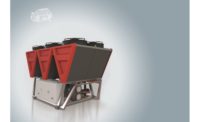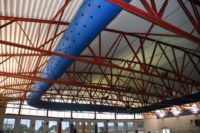Amherst College in Massachusetts has embarked upon an ambitious plan to greatly reduce its carbon footprint by 2030. Major progress has already been made, courtesy of the addition of solar power and a new science center that incorporates a great many sustainability features. These serve to both lower energy usage and improve overall efficiency.
For example, an innovative upgrade to the main science building cooling system reduces the amount of energy required during the summer. A combination of a glycol loop and a MeeFog evaporative cooling system augment the electric chiller plant and lower energy costs by up to one-third. The college just stepped things up further after breaking ground on a geothermal project that will help it to phase out steam heating over the next few years.
Science Center expansion
Founded in 1821 with a focus on liberal arts, Amherst College has seen an 85% increase in enrollments in science, technology, engineering, and math (STEM) classes during the past 15 years. Consequently, a new Science Center was opened in the fall of 2018 that embraces sustainability and efficiency standards.
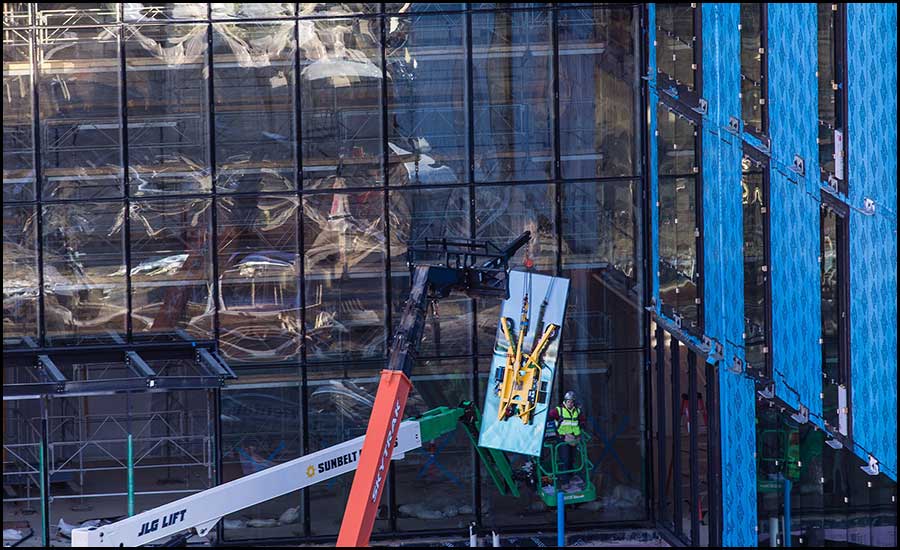
The facility was designed to reduce energy usage by 73% compared to the typical science building through a variety of features. These include efficient HVAC systems, individual lab hood controls, an insulating building envelope, a floor plan that groups specialized labs, rainwater harvesting (to reduce water consumption by a million gallons a year), and a rooftop solar array (to provide one-third of energy use).
Additional solar energy comes from the Farmington Solar project in Maine via a 20-year power purchase agreement (PPA) for 10,000 megawatt hours (MWh) of electricity. This PPA cuts carbon emissions by 3,200 metric tons per year and greenhouse gas (GHG) emissions by 17.5%. The rest of the needed power (about half) is derived from a combined heat and power (CHP) plant on campus, which is to gradually be phased out.
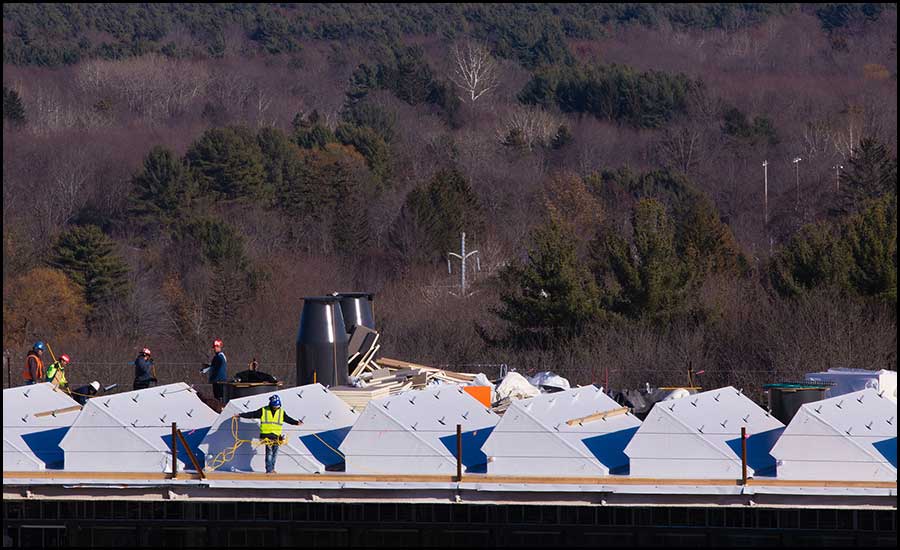
“Deriving such a significant amount of Amherst’s electrical needs from this renewable source represents a major step in the college’s Climate Action Plan (CAP),” said James Brassord, chief of campus operations. “This electricity will be used to power the infrastructure that will allow us to decarbonize the campus.”
Building efficiency improvements
Meanwhile, tangible reductions in energy load and carbon footprint are being achieved through building energy-efficiency improvements. The Science Center labs have a ferocious appetite for cooling. Various regulations and standards demand no recirculation of inside air in the labs. Thus, new ambient air must be continually fed in. During the summer months, that air is hot. A lot of energy is required to bring down the temperature to a comfortable level, courtesy of a central chiller plant campus loop.
“Continuous air replacement is the top operating expense of the Science Center,” said Amherst College Science Center Specialist Kyle Mangini who looks after all laboratory and mechanical systems.
The Science Center design included features that reduce the cost burden (and hence the carbon footprint) of the chiller plant. This is achieved via a waste heat energy recovery system.
The exhaust air from the Science Center is fed through a glycol loop by Konvekta, which is used to cool the outside air entering the building. The heat exchange efficiency of this system is raised by the addition of a MeeFog cooling system by Mee Industries. It adiabatically precools the exhaust air by 10° to 15℉ with the evaporation of microfine fog droplets before it hits the glycol loop. Thus, the workload on the large centrifugal chillers used to cool the outside air is considerably reduced.
“Chiller energy usage can be brought down by as much as a third using this cooling augmentation approach,” said Mangini.
Fog pre-cooling
Jonathan VanDine, owner of JVD Industrial acted as the manufacturer’s rep for the fogging system. He explained how it works: Four heat recovery units (HRUs) have fog nozzle arrays stationed inside to spray the exhaust air with fog. In summer, the exhaust air from the labs averages between 72° and 80° but can soar as high as 90° at times. Fogging drops the average down anywhere from 60° to 64° before it’s drawn across the heat exchanger as part of the energy recovery system.
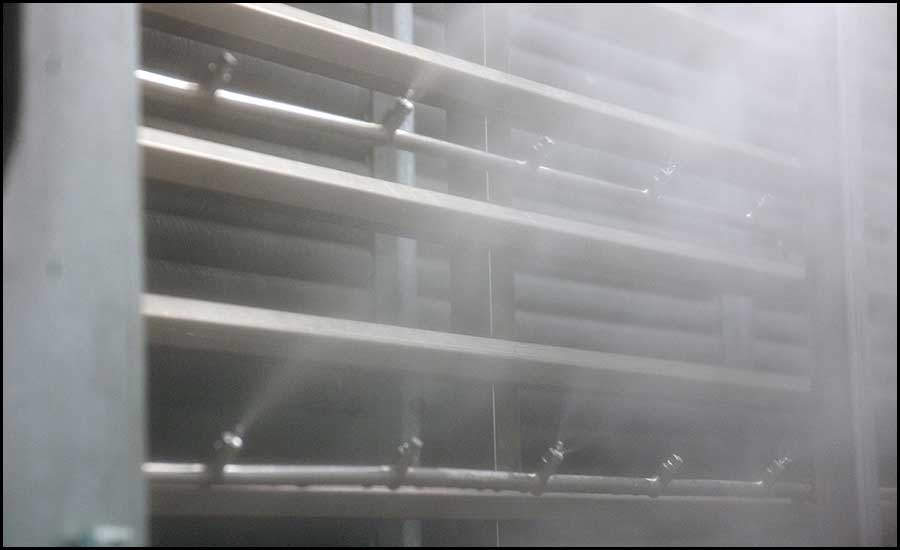
Mangini said three electric centrifugal chillers of around 500 to 600 tons each are used to provide chilled water to the entire campus. One of these chillers is used to cool anywhere from 85,000 to 100,000 cfm of the outside air needed by Science Center labs.
“The glycol loop helps to reduce air replacement costs and is almost always running,” said Mangini.
In July, when temperatures can reach 80° or more, up to 500 tons of cooling might be needed for outside air to the lab. The fog system for exhaust air operates seasonally. It runs from May to September.
“Once we start the fogging system, the tonnage needed for cooling drops to around 150 to 250 tons,” said Mangini. “We get a lot more cooling out of the Konvekta glycol system due to fogging at the exhaust level.”
He estimates that the average tonnage curtailment from the Mee/Konvekta systems runs at around 30%. If the chillers are operating at 250 tons per day, the MeeFog reduces the load by about 80 tons and the Konvekta system by about 20 tons on a summer’s day due to the evaporative cooling of exhaust air.
Seasonal numbers show a reduction of about 36,000 tons of chiller cooling due to fog alone over one summer. Data pulled from building systems at Amherst College from the summer of 2022 shows a reduction of 17,050 tons of chilling load when only the glycol loop is running, and 53,120 tons reduction when both fog and the glycol loop are operating. The numbers for fogging increase during the hottest months and tail off in May/June and September.
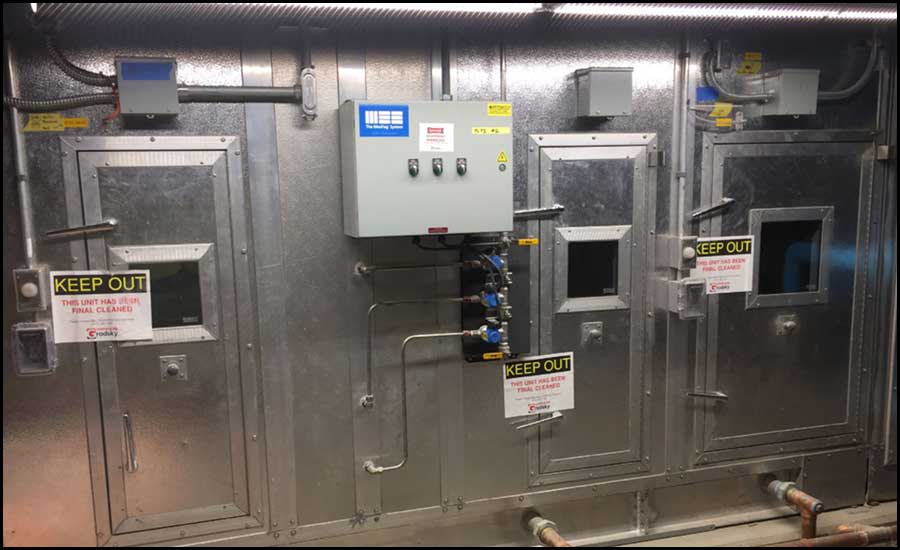
“Eliminating an additional 36,000 tons of annual chiller load is huge for us,” said Mangini. “As well as representing a major dent in the annual bill for continuous air replacement to the labs, the combination of MeeFog and a glycol loop brings about another big drop in our carbon footprint.”
Amherst College also uses MeeFog for building humidification in the winter. From roughly October to June, fogging is used inside five air handling units (AHUs) to raise the dry, winter air to the desired level of humidity.
“We need humidity in labs to avoid static electricity that can damage computers and other equipment, and in our mill so wood doesn’t get too dry,” said Mangini. “Our physics department wants 40% humidity, and we can’t reach that without MeeFog.”
He added that as another aspect of the college’s climate action plan, fogging may eventually replace steam-based humidification systems used at other parts of the campus, such as the Art Museum building and other facilities.
Future plans for geothermal
While these systems have already eaten into the carbon footprint of the campus, Amherst has even bigger plans. It aims to achieve carbon neutrality by 2030. A major part of this is converting from steam heating powered by fossil fuels to low-temperature hot water heating. This project is being staged over seven years and is scheduled to be completed by 2030.
It will require conversion of the existing heating system as well as the laying of new pipes underground to connect all campus buildings to each other and the low-temperature hot water system. To complete the transition, Amherst will drill geothermal wells and install electric heat pumps. Water will be heated to 130° to provide heat to buildings.
“We just began removing steam heating gradually from the campus,” said Mangini. “The transition to geothermal energy means the college can slash its carbon dioxide emissions by another 14,000 tons per year.”
.jpg?1712171910)


